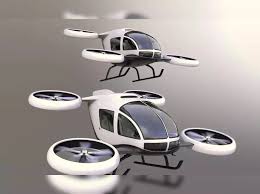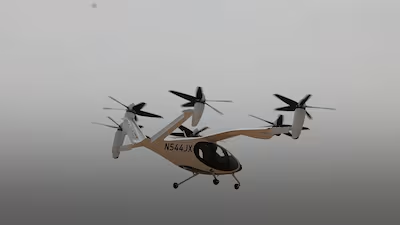A New Era of Urban Transportation in the UAE
In just a matter of days, the UAE will witness a groundbreaking leap in transportation — the first piloted flights of its much-anticipated flying taxis. This futuristic mode of travel, once confined to science fiction, is now on the brink of becoming reality. The flying taxi project marks a pivotal moment in the country’s ambition to redefine urban mobility and cement its position as a global leader in smart transportation.
The introduction of piloted flights is the crucial next step in ensuring the technology’s readiness, safety, and reliability before a full commercial launch. These trials are expected to capture the attention of residents, businesses, and global travellers eager to experience a new dimension of commuting.
Turning Vision into Reality
The UAE has been steadily preparing for this moment, combining its strong technological infrastructure with forward-thinking policies to embrace aerial mobility. Authorities have been working alongside international aviation experts and manufacturers to ensure that these flying taxis meet the highest safety and performance standards.

The piloted test phase will not only assess the aircraft’s capabilities but also give engineers real-world data to refine systems and operations. This step is essential for building public confidence, as the idea of taking to the skies in a small, electric vertical take-off and landing vehicle (eVTOL) is still new to most commuters.
What Passengers Can Expect
The flying taxis are designed to be sleek, efficient, and surprisingly quiet. They will offer vertical take-off and landing abilities, eliminating the need for long runways and allowing them to operate from dedicated “vertiports” in key parts of the city.

Inside, passengers will experience a smooth, automated flight experience guided by skilled pilots in this initial phase. The compact cabins will be designed for comfort, with large windows offering panoramic views of the city skyline — transforming the daily commute into an extraordinary journey.

Flight times are expected to be significantly shorter than road travel, especially during rush hours. For example, a trip that might take 45 minutes by car could be completed in less than 10 minutes by air.
Strategic Locations for Take-off and Landing
Planned vertiports will be strategically located near major business hubs, tourist destinations, and transport interchanges. This network aims to connect areas like Dubai International Airport, Downtown Dubai, Dubai Marina, and other high-traffic zones.
The goal is to integrate flying taxis seamlessly into the wider public transport system, making them a fast and accessible option for short to medium-distance travel. Eventually, passengers may be able to book flights through ride-hailing apps, making the process as simple as ordering a car.
Environmental and Economic Impact
One of the most exciting aspects of this project is its sustainability potential. The flying taxis are expected to be fully electric, producing zero direct emissions and reducing the reliance on traditional fuel-powered vehicles.
By shifting some of the transportation load from roads to the skies, congestion could be eased, leading to faster travel times and improved air quality. Furthermore, the project is anticipated to create new jobs in aviation, maintenance, customer service, and vertiport operations, boosting the local economy.
Building Public Confidence
While the technology is exciting, public trust will be key to its adoption. That’s why the piloted flights are so important. Seeing trained professionals in control of the aircraft during the early stages will help people feel safer about the concept.
Safety demonstrations, open days, and trial passenger experiences are expected to be part of the awareness campaign. Authorities will also ensure that the regulatory framework covers every aspect of operations — from pilot training and maintenance to emergency response procedures.
Challenges and the Road Ahead
As with any pioneering technology, there are challenges to overcome. Weather conditions, air traffic management, and infrastructure readiness will all need careful planning.

The success of the piloted flights will set the stage for autonomous flying taxis in the future, which could eventually operate without human pilots. The timeline for full rollout will depend on the outcomes of these upcoming trials, as safety and efficiency remain the top priorities.
Global Interest in UAE’s Sky Travel Vision
The world is watching as the UAE prepares to lead the way in urban air mobility. Other cities have been testing flying taxi prototypes, but the UAE’s commitment to launching real-world piloted flights puts it ahead in the race to commercialise the technology.
International partnerships with aircraft manufacturers and aviation authorities have already positioned the country as a hub for aerial mobility innovation. If the trials succeed, the UAE could become a blueprint for how flying taxis can be integrated into everyday city life.
The Future is Just Above Our Heads
The piloted flights of the UAE’s flying taxis represent more than just a technological milestone — they symbolise the country’s readiness to embrace the future. In a few days, history will be made in the skies above, and the way people think about travel could change forever.
With its strong vision, ambitious leadership, and commitment to innovation, the UAE is proving that the sky is no longer the limit — it is the next frontier.
Do follow UAE Stories on Instagram















